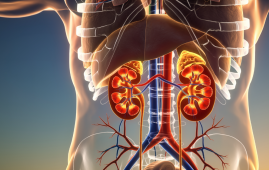

Early Mental Health Interventions: Key to Economic and Social Gains
Addressing adolescent mental health is no longer just a moral issue—it’s an economic necessity. A recent study published in PLOS Medicine shows how preventive mental health policies can yield substantial benefits in labor participation, income, and societal well-being while reducing healthcare costs.
Highlights of the Study
- Economic Impact of Adolescent Distress:
Adolescents experiencing mental distress work 201 fewer hours annually and earn $5,658 less than their peers. By age 30, their total assets are $10,833 lower. - Health and Education Outcomes:
This group shows poorer self-rated health, an 11% higher reliance on Medicaid/Medicare, and a 9% lower rate of postsecondary education. - Potential Federal Savings:
Policies that reduce psychological distress in adolescents by 0.7 percentage points could save $52 billion over ten years, mainly via improved workforce engagement.
Why Adolescent Mental Health Matters
Government analyses often treat adolescent mental health policies as costs, neglecting their long-term societal returns. This study bridges that gap, demonstrating that such investments reduce reliance on government programs and enhance economic productivity.
- Current Costs:
Annual mental health funding stands at $60 million, serving 500 individuals per million dollars invested. - Expansion Need:
To cover 25% of adolescents, a $10 billion investment is required, offering significant financial and social returns.
Policy Implications
- Expand Preventive Care:
Increased access to psychiatric health services can significantly reduce distress in high-risk adolescents. - Strengthen Educational Support:
Bolstering schools and community programs can address the root causes of psychiatric health challenges. - Broader Systemic Interventions:
Holistic policies that combine healthcare with educational and social initiatives promise greater long-term impacts.
Key Takeaways
Investing in adolescent mental health is not just ethically sound—it’s financially prudent. By addressing this early, governments can reduce fiscal pressures, enhance productivity, and build a healthier, more resilient society. With $52 billion in potential savings, the case for increased funding has never been clearer.
Register for Effective Management of Psychiatric Care for more insights.
More Information: Counts, N. Z., Kreif, N., Creedon, T. B., et al. (2025). Psychological distress in adolescence and later economic and health outcomes in the United States population: A retrospective and modeling study. PLOS Medicine. doi: https://doi.org/10.1371/journal.pmed.1004506.https://journals.plos.org/plosmedicine/article?id=10.1371/journal.pmed.1004506.
more recommended stories
 Ultramarathon Physiology: What HCPs Should Know?
Ultramarathon Physiology: What HCPs Should Know?Ultramarathon Metabolism: What Happens to the.
 Sterilized Fermented Beverage for Obesity: New Evidence
Sterilized Fermented Beverage for Obesity: New EvidenceEarly Insights Into a Sterilized Fermented.
 36-Week Pre-eclampsia Screening May Reduce Term Risk
36-Week Pre-eclampsia Screening May Reduce Term RiskA New Preventive Strategy for Term.
 Cardiovascular Risk and Sudden Cardiac Death in Diabetes
Cardiovascular Risk and Sudden Cardiac Death in DiabetesRising Sudden Cardiac Death (SCD) Risk.
 Poor Kidney Function and Alzheimer’s Biomarkers Explained
Poor Kidney Function and Alzheimer’s Biomarkers ExplainedPoor kidney function may influence levels.
 Walking Speed Before Hip Replacement Predicts Recovery
Walking Speed Before Hip Replacement Predicts RecoveryNew Evidence Points to a Simple,.
 Neuroblastoma Drug Combo Extends Survival in Models
Neuroblastoma Drug Combo Extends Survival in ModelsA Promising Shift in High-Risk Neuroblastoma.
 How Soybean Oil Impacts Weight Gain and Metabolism
How Soybean Oil Impacts Weight Gain and MetabolismWhy Soybean Oil May Affect Metabolism.
 New Malaria Prevention Insights From African Biostatistics
New Malaria Prevention Insights From African BiostatisticsHow New Data Is Reframing Malaria.
 Coffee and Cognitive Function: Evidence Review
Coffee and Cognitive Function: Evidence ReviewA new narrative review in Cureus.

Leave a Comment